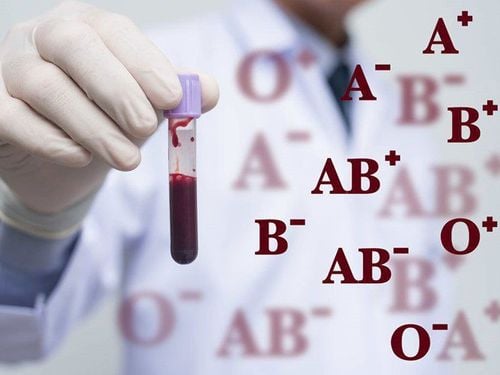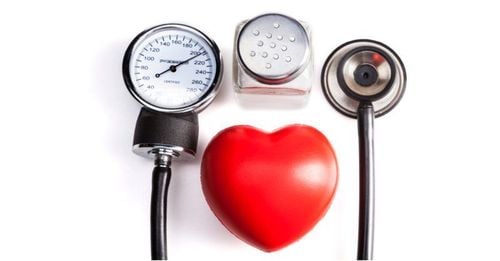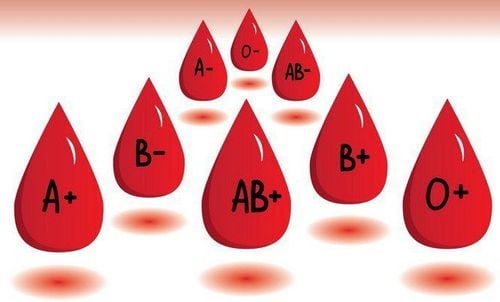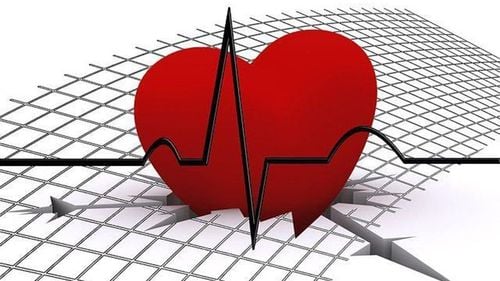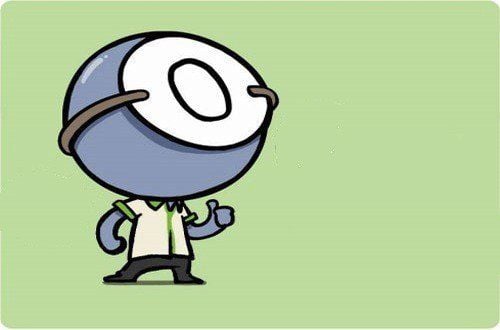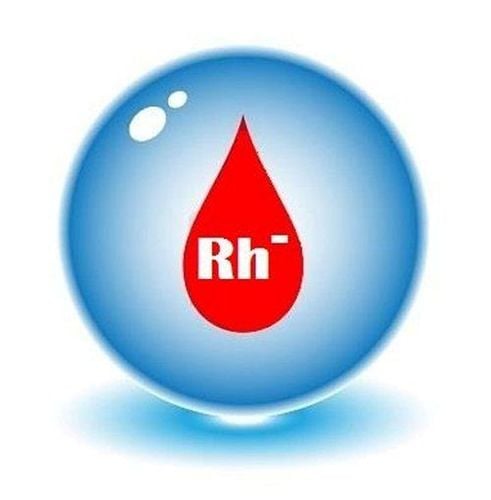This is an automatically translated article.
The article was written by a doctor of Hematology - Blood Transfusion - Laboratory Department - Vinmec Ha Long International General Hospital.
ABO blood group system is one of the two most important blood group systems in blood transfusion activities. The ABO blood group system includes 4 blood groups, A, B, O and AB with different distribution rates in the community in each race. In Vietnam, this ratio is: group O about 45%, group B about 30%, group A about 20% and group AB about 5%.
1. What is ABO blood group?
In 1900, while studying the relationship between red blood cells and human serum, an Austrian doctor named Karl Landsteiner (1868 - 1943) noticed that the serum of some people causes agglutination of the red blood cells of other individuals, but some people's red blood cells don't agglutinate. After thousands of experiments, in 1901 he concluded:
Serum from one group of people (symbol A) causes agglutination of the red blood cells of another group (symbol B), but does not cause agglutination of the human red blood cells. same group A; The red blood cells of the group A person are agglutinated by the serum of group B. The serum of the third group (symbolized by C) causes agglutination of the red blood cells of both group A and B, and the red blood cells of group C. was not agglutinated by the sera of group A and B. From that, he built 3 groups of people with their own agglutination characteristics and called them group A, B, C (group C later called O). That is:
People with red blood cells A have no agglutinin A (group A); People with B red blood cells do not have B agglutinin (group B); People with both A and B agglutination in the serum have red blood cells that do not have A and B antigens (group O). A year later (1902), A.Decastrello and A. Sturli demonstrated that the fourth group, his red blood cells did not have A and B agglutination, but had both A and B antigens (group AB). . Thus, Landsteiner and his students have built 4 blood groups A, B, AB and O, referred to as the ABO blood group system.
From here he came up with the rules of blood transfusion of the ABO blood group system. In 1913, Ottenberg demonstrated that Preliminary blood testing protected transfusion reactions, and since then, blood transfusion has flourished. The invention of Landsteiner and his associates can be considered as a bright light shining into a dark room. Because he has opened up the mysteries of Transfusion of human blood causing death and created new research directions: Hematology Immunology, Graft Immunity, Genetics, Human Origin and Forensic Medicine.
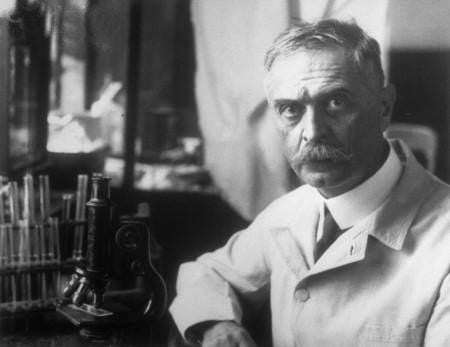
Bác sĩ Karl Landsteiner (1868 - 1943)
Greater value is to save millions upon millions of anemic people thanks to Landsteiner's blood transfusion rule. For this great invention, in 1930 Landsteiner was awarded the Nobel Prize in Medicine.
1.1 Blood Type A Blood group A is characterized by the presence of A antigens on red blood cells, and B antibodies (against B antigens) in the serum. So, people with blood type A can:
Donate blood to people with blood type A, people with blood type AB. Receiving blood from people with blood types O and A. 1.2 Blood group B Blood group B is characterized by the presence of B antigens on red blood cells and A antibodies (against A antigens) in the serum. So, people with blood type B can:
Donate blood to people with blood type B, people with blood type AB. Receive blood from people with blood type B or O. 1.3 Blood type AB Unlike blood type O, blood type AB is uncommon, is characterized by having both A and B antigens on red blood cells, and is absent. antibodies in plasma. So, people with blood type AB can:
Donate blood to people with blood type AB. Receive blood from all people with blood types A, B, AB, O. 1.4 Blood type O Blood type O is the most common blood group, with no A antigens and no B antigens on red blood cells either, but have both A and B antibodies in the serum. Therefore, a person with blood type O can:
Donate blood for all remaining blood types A, B, AB, O. Receive blood from people with blood type O. The ABO blood group system includes 4 blood types. are A, B, O and AB with different distribution in the community in each race. In Vietnam, this ratio is: group O about 45%, group B about 30%, group A about 20% and group AB about 5%.
In 2019, the International Blood Transfusion Association recognized that there are 39 red blood cells with 367 different blood group antigens; in which, two blood group systems ABO and Rh are the most important in blood transfusion activities.
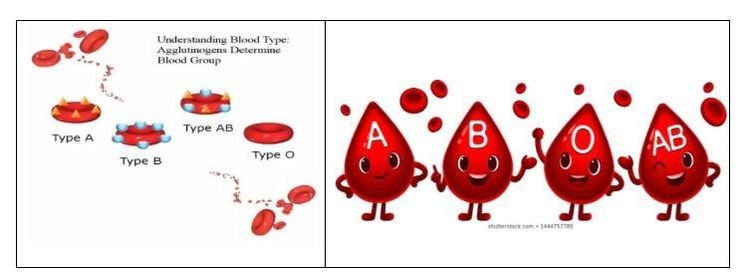
Nhóm máu hệ ABO
2. How is the ABO blood group test used?
Testing when the patient needs a blood transfusion (acute/chronic anemia, pre-surgery...) to select the appropriate unit of blood for transfusion. Testing for people who want to register to donate blood, organs, tissues and bone marrow to determine and assess compatibility of donors and recipients. This test also serves to determine the bloodline. Testing for pregnant women to control possible risks due to blood group incompatibility between mother and baby. To check the identity of a person suspected of committing a crime...
3. What do test results mean?
At the end of life (about 1940-1950) Landsteiner and his students discovered the inheritance of blood groups between father, mother and child.
Blood types are inherited according to Mendel's law. Each blood group in the ABO system is regulated by genes that are either dominant (dominant) or recessive (recessive). The combination of recessive and dominant genes will determine the specific blood group of each person: there are 2 dominant genes that regulate blood group traits, which are gene A and gene B; There is 1 recessive gene for blood type trait, that is the O gene:
People with blood type A can have genotype AA or AO, People with blood group B have genotype BB or BO, People with blood group AB have genotype AB, People with blood type O carry the genotype OO. Therefore, the combination of a father with type A and a mother with blood group B can produce a child with type AB blood.
Below is a diagram of the inheritance mechanism of ABO blood group :
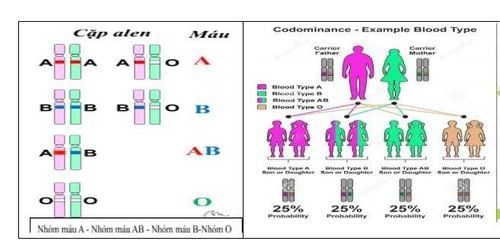
Sơ đồ di truyền nhóm máu hệ ABO
Blood group antigens are protein products on the red blood cell membrane, the synthesis of which is encoded by genes located on chromosomes, genes that assemble in a system. The combination of genes of one or more systems (genotypes) produces traits (phenotypes) that are blood groups. For example, people with blood group AB are due to having both A and B genes in the ABO blood group system.
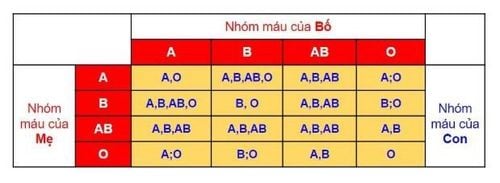
One of the most valuable reasons to know one's blood type is to help others. Because in life there is no shortage of unexpected unexpected situations, and the blood reserve bank is in short supply of the blood type that the patient needs, then people with the same blood type as the patient can help the patient. timely blood transfusion.
To know what blood type you are, you should go to reputable medical facilities for testing. Vinmec International General Hospital is a high-quality medical facility in Vietnam with a team of highly qualified medical professionals, well-trained, domestic and foreign, and experienced.
A system of modern and advanced medical equipment, possessing many of the best machines in the world, helping to detect many difficult and dangerous diseases in a short time, supporting the diagnosis and treatment of doctors the most effective. The hospital space is designed according to 5-star hotel standards, giving patients comfort, friendliness and peace of mind.
Please dial HOTLINE for more information or register for an appointment HERE. Download MyVinmec app to make appointments faster and to manage your bookings easily.
REFERENCES
Department of Hematology-Blood Transfusion, Hanoi Medical University (2014). Lecture on Hematology-Blood Transfusion (Graduate). Medical Publisher. Website of the National Institute of Hematology and Blood Transfusion: nihbt.org.vn Website of the Ho Chi Minh City Blood Transfusion and Hematology Hospital: bthh.org.vn Source: - THE HISTORY OF BLOOD TRANSFUSION AND BLOOD TRANSFUSION MEDICINE (bloodbook.com/trans-history.html)
- The History of Blood Banking.




